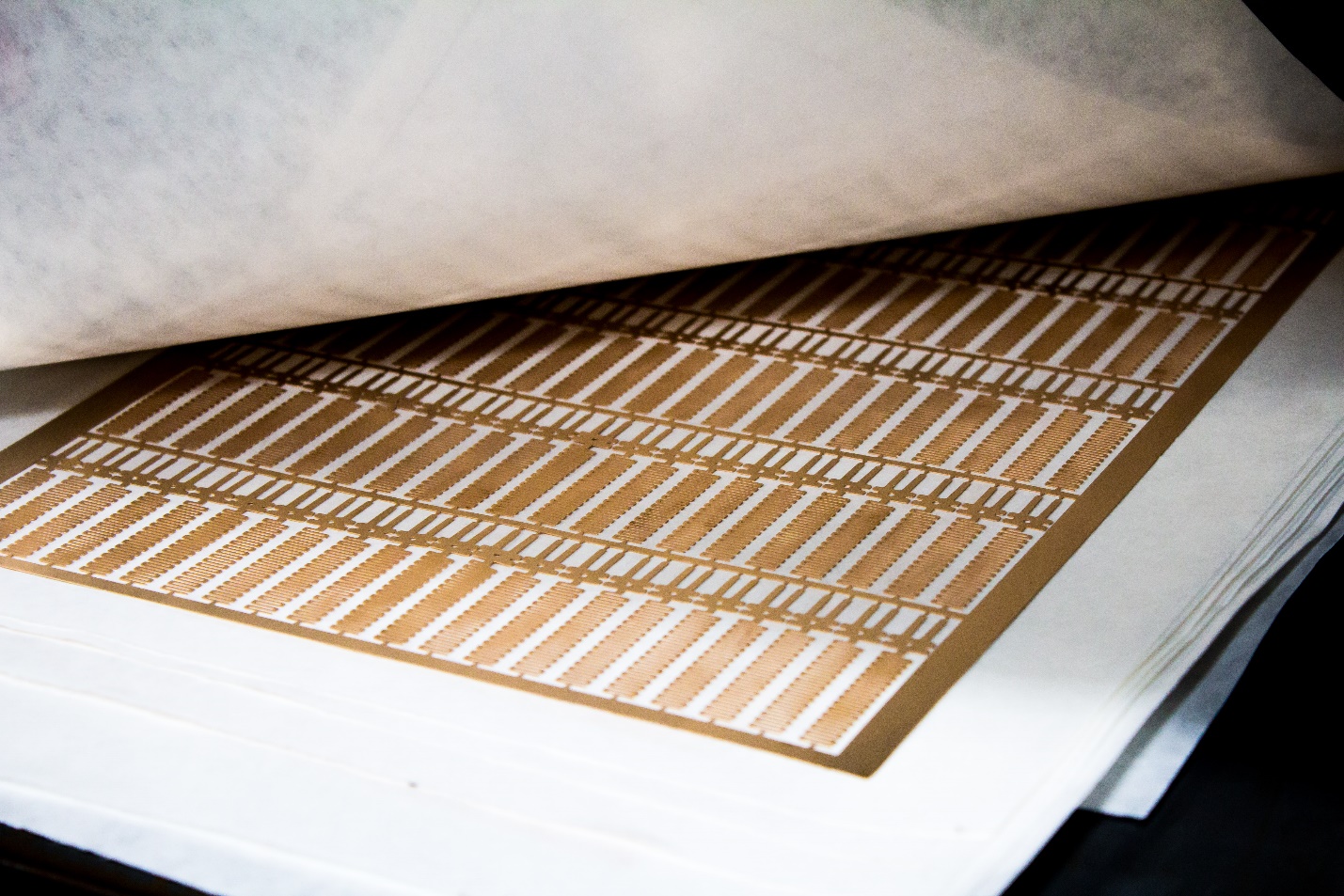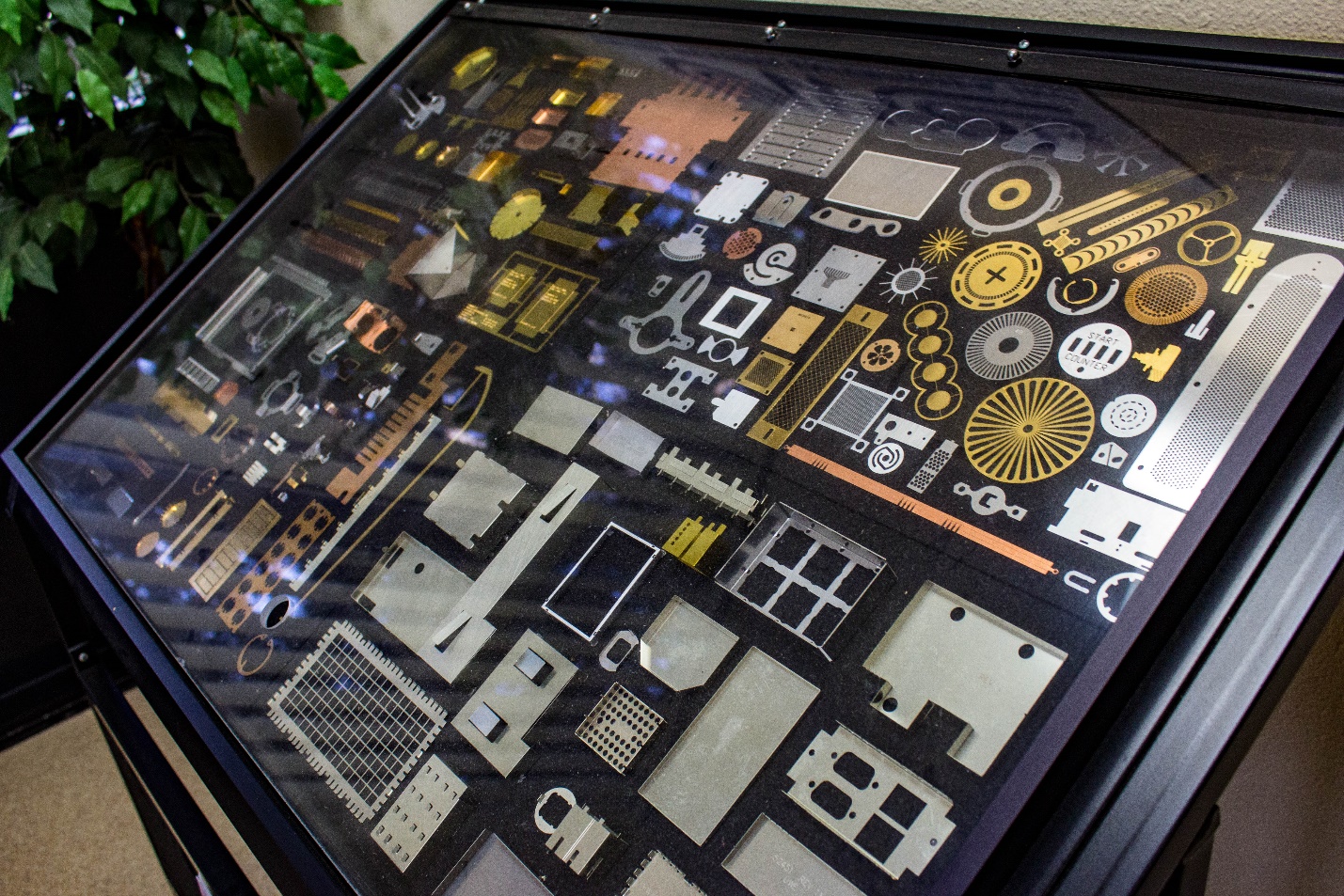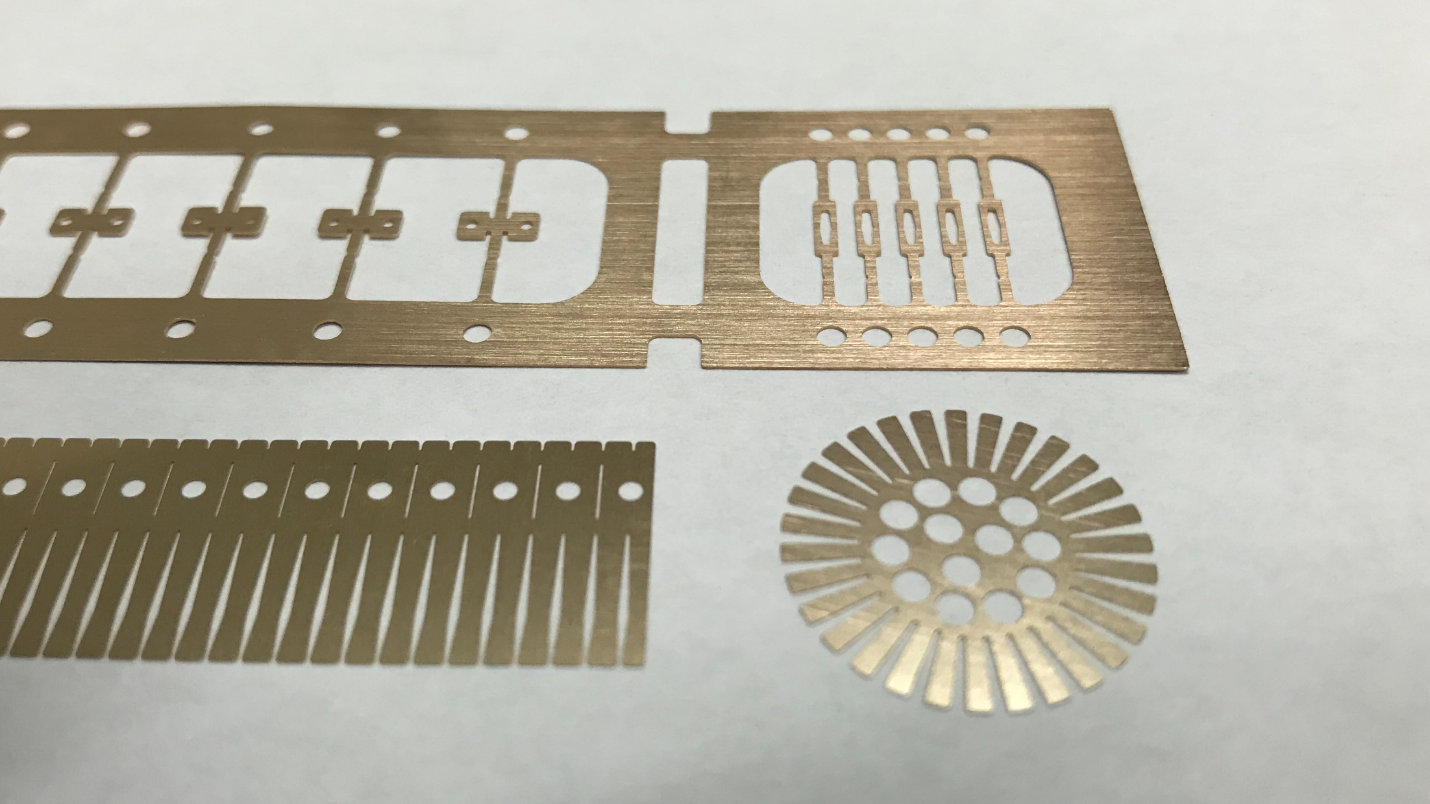Frequently Asked Questions About Photochemical Etching
Photochemical etching goes by a number of names, including photo etching, metal etching, chemical milling, and photochemical machining. It is a subtractive manufacturing process used for thin metal parts that removes specific areas of metal through carefully controlled exposure to a chemical agent.
At United Western Enterprises the metal etching process works by laminating the part with a specially designed photoresist mask, which shields selected portions from the etching chemical. When executed properly, photochemical etching can create precision metal parts with very tight tolerances.
Although it has been successfully utilized in many industries since the 1950s, photochemical milling remains a somewhat opaque subject for some. The benefits of photochemical etching remain unclear to many, as do its advantages, if any, over alternative fabrication methods. Here we’ll attempt to answer a few common questions that tend to arise in association with photochemical etching as it is used today in the manufacturing sector.

What Kinds of Materials Can Be Subjected to Photochemical Etching?
At United Western Enterprises photochemical etching process is intended for metal parts. It can handle several different types of metal including: stainless steel, copper, nickel, aluminum, molybdenum, various alloys, and more. The hardness of the metal does not affect the photochemical process.
What Kinds of Patterns Can Be Created with Photochemical Etching?
This is an area where photochemical etching can demonstrate clear advantages over traditional mechanical or laser milling techniques. The photochemical process is able to create extremely elaborate patterns with finely rendered details at a high degree of accuracy, and it can do so in a very efficient manner.
How Cost-Effective Is Photochemical Etching?
Photochemical etching tends to be significantly less expensive than alternative etching processes, for a number of reasons:
Easy design changes
Creating specialized tooling for etching jobs can be time-consuming and expensive. The costs only increase if it becomes necessary to alter etching designs midway through a project—this is especially true when dealing with traditional stamping tools. However, it’s relatively easy and inexpensive to change a design with photochemical etching, as it’s chiefly a matter of updating the CAD file and creating a new photoresist film.
Fast manufacturing times
Chemical etching works its magic on all areas of a given component at the same time. By contrast, most other subtractive manufacturing processes do not share this characteristic. Laser etching, for instance, functions in a linear fashion, moving from one spot to the next. The simultaneity of the photochemical etching process tends to shorten manufacturing times and reduce production expenses.
No need to replace tooling
Stamping and other processes that rely on mechanical tooling are prone to becoming worn, unreliable, or completely non-functional over time. Photochemical etching is not reliant on this type of equipment. The tooling is based on computer-aided design.
Inexpensive sampling
The lack of special tooling also enables a photochemical facility to provide customers with samples and prototypes at minimal cost. These savings can be passed on to the client.
Does Photochemical Etching Cause Deformations or Distortions?
Not at all. This is a huge production advantage associated with chemical etching. Most alternative etching methods create stresses to the metal being treated that inevitably deform or distort the part to one degree or another. These stresses can result in a part or component that falls outside acceptable tolerance and/or requires additional processing, which, in turn, tends to result in higher production costs.

How Does Photochemical Etching Compare to Other Methods?
Let’s have a look at alternative manufacturing methods and how they compare with photochemical etching processes.
Stamping
Stamping is a time-honored method of metal machining but stamping comes with several shortcomings that can make this process impractical or undesirable in some cases. One issue concerns the costs linked to the creation of tooling, which can be prohibitive. The sizable expense involved in crafting stamping tools also has the effect of discouraging design revisions after production has begun. It could easily lead to budget over-runs. Photochemical etching, conversely, incurs relatively modest tooling costs.
In addition, stamping causes various stresses on the material and, often, it cannot be applied at all on delicate or soft metals without inflicting damage. Again, this is not an issue for photochemical etching.
Laser
Laser-cutting techniques provide several key production benefits. Like photo etching, laser-cutting processes can be successfully performed on virtually any kind of metal, irrespective of its degree of hardness. However, lasers inevitably create thermal stress on metal, leaving behind burrs that require an additional step for removal—or, possibly, render it altogether unusable. This is particularly problematic for thin, delicate materials. Photochemical etching does not cause thermal stress.
Electroforming
This process relies on electrolytic baths to create metals at a high level of accuracy and repeatability. Nickel is the metal most commonly subjected to this process, but other metals are suitable as well. Electroforming does not lead to the formation of burrs. It does, however, inflict a low level of stress on the material and may be unfit for hard metals. Chemical etching is not impeded by these limitations.
Water jet
Water jet cutters are highly effective for fabricating a broad range of materials, including almost all types of metals. Unfortunately, as a tool for etching metals, this gear is not without significant drawbacks. Water jet cutting is frequently ineffective or prohibitively difficult on hard metals. Furthermore, the cutting processes generate stress on the metal and may leave behind burrs. None of these drawbacks applies to photochemical etching.
Wire cutting
Wire electrical discharge machining (WEDM), or wire cutting, is another method of etching metals, including some types that are resistant to conventional techniques. It is characterized by the use of a carefully guided thin spooled metal wire to shape materials to the desired specifications. Although it is a powerfully effective process under certain circumstances, it has limitations not shared by electrochemical etching. EDM is difficult to employ on electrically non-conductive metals. Even when this is not a consideration, it is a fairly slow process and, like the other methods mentioned above, prone to creating burrs and stresses.

Established in 1969, United Western Enterprises, Inc., manufactures photo-etched parts for the electronics, aerospace, medical, and automotive sectors. Currently based in Camarillo, CA, United Western Enterprises is an AS 9100D / ISO 9001:2015 Certified Company. To learn more about our advanced metal etching technology and etching process, call us at (800) 964-6461 or contact us via our webform. You can request a quote.
